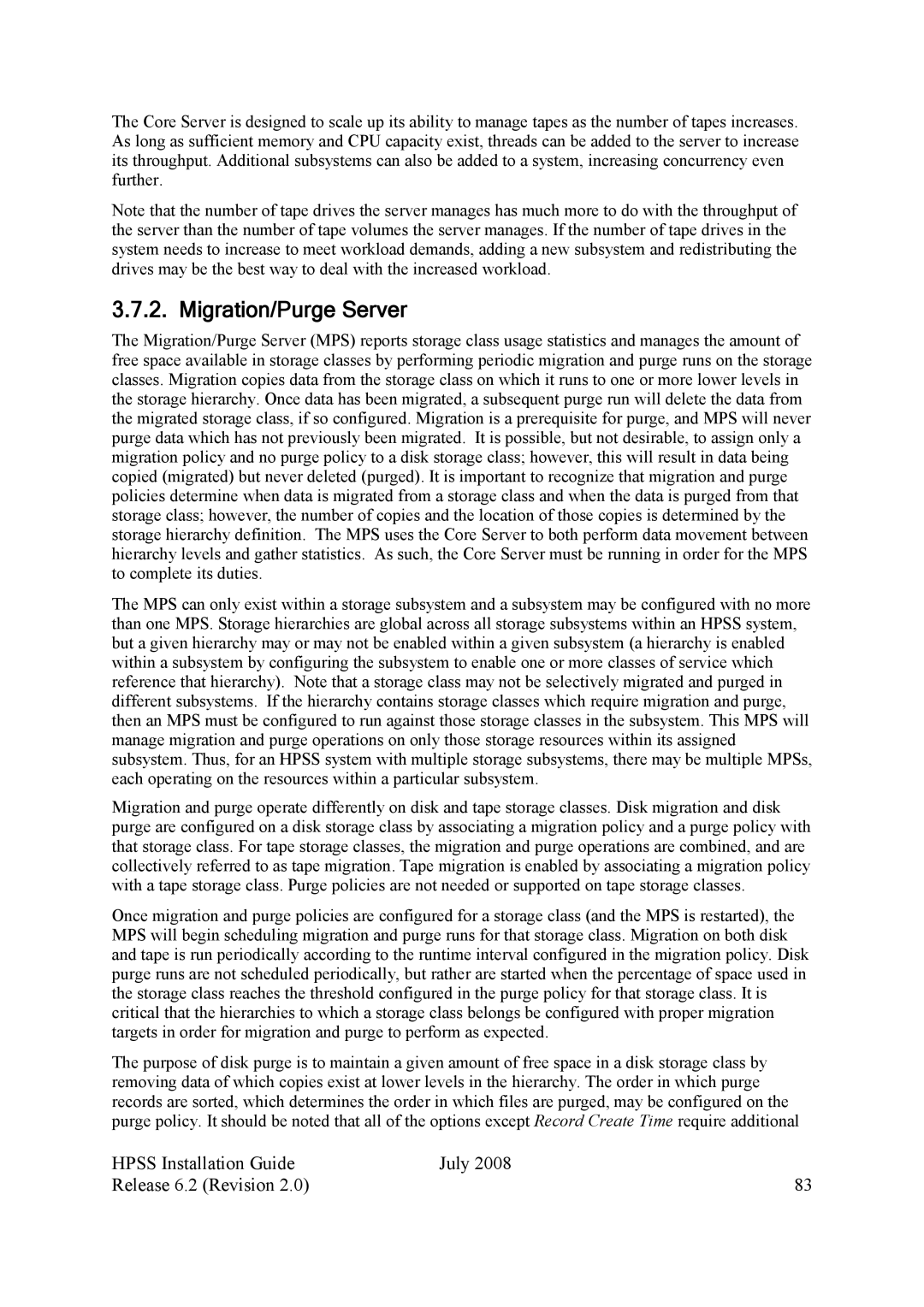The Core Server is designed to scale up its ability to manage tapes as the number of tapes increases. As long as sufficient memory and CPU capacity exist, threads can be added to the server to increase its throughput. Additional subsystems can also be added to a system, increasing concurrency even further.
Note that the number of tape drives the server manages has much more to do with the throughput of the server than the number of tape volumes the server manages. If the number of tape drives in the system needs to increase to meet workload demands, adding a new subsystem and redistributing the drives may be the best way to deal with the increased workload.
3.7.2. Migration/Purge Server
The Migration/Purge Server (MPS) reports storage class usage statistics and manages the amount of free space available in storage classes by performing periodic migration and purge runs on the storage classes. Migration copies data from the storage class on which it runs to one or more lower levels in the storage hierarchy. Once data has been migrated, a subsequent purge run will delete the data from the migrated storage class, if so configured. Migration is a prerequisite for purge, and MPS will never purge data which has not previously been migrated. It is possible, but not desirable, to assign only a migration policy and no purge policy to a disk storage class; however, this will result in data being copied (migrated) but never deleted (purged). It is important to recognize that migration and purge policies determine when data is migrated from a storage class and when the data is purged from that storage class; however, the number of copies and the location of those copies is determined by the storage hierarchy definition. The MPS uses the Core Server to both perform data movement between hierarchy levels and gather statistics. As such, the Core Server must be running in order for the MPS to complete its duties.
The MPS can only exist within a storage subsystem and a subsystem may be configured with no more than one MPS. Storage hierarchies are global across all storage subsystems within an HPSS system, but a given hierarchy may or may not be enabled within a given subsystem (a hierarchy is enabled within a subsystem by configuring the subsystem to enable one or more classes of service which reference that hierarchy). Note that a storage class may not be selectively migrated and purged in different subsystems. If the hierarchy contains storage classes which require migration and purge, then an MPS must be configured to run against those storage classes in the subsystem. This MPS will manage migration and purge operations on only those storage resources within its assigned subsystem. Thus, for an HPSS system with multiple storage subsystems, there may be multiple MPSs, each operating on the resources within a particular subsystem.
Migration and purge operate differently on disk and tape storage classes. Disk migration and disk purge are configured on a disk storage class by associating a migration policy and a purge policy with that storage class. For tape storage classes, the migration and purge operations are combined, and are collectively referred to as tape migration. Tape migration is enabled by associating a migration policy with a tape storage class. Purge policies are not needed or supported on tape storage classes.
Once migration and purge policies are configured for a storage class (and the MPS is restarted), the MPS will begin scheduling migration and purge runs for that storage class. Migration on both disk and tape is run periodically according to the runtime interval configured in the migration policy. Disk purge runs are not scheduled periodically, but rather are started when the percentage of space used in the storage class reaches the threshold configured in the purge policy for that storage class. It is critical that the hierarchies to which a storage class belongs be configured with proper migration targets in order for migration and purge to perform as expected.
The purpose of disk purge is to maintain a given amount of free space in a disk storage class by removing data of which copies exist at lower levels in the hierarchy. The order in which purge records are sorted, which determines the order in which files are purged, may be configured on the purge policy. It should be noted that all of the options except Record Create Time require additional
HPSS Installation Guide | July 2008 |
Release 6.2 (Revision 2.0) | 83 |
